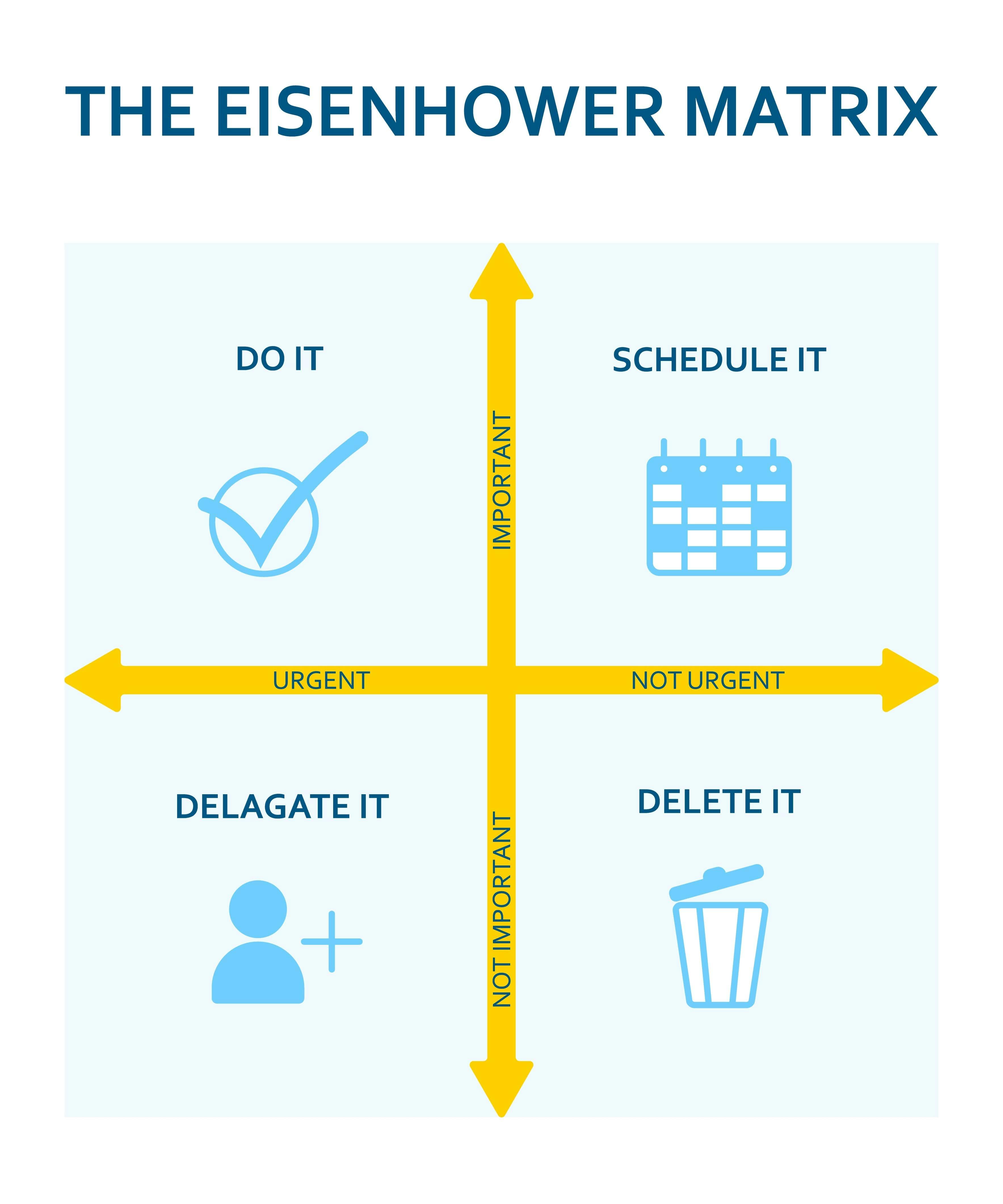One of the most flexible and dynamic working arrangements is the distributed work model. Also called a blended work model, a distributed work environment is made up of both on-site and off-site employees, usually dispersed across multiple geographies. It incorporates a mix of traditional office facilities with remote locations, including co-working spaces and home offices.
Strategic communication is central to the success of a distributed workforce, as it’s conducted digitally, in-person and across multiple time zones. While this is beneficial on many levels, it does pose a few challenges that can easily be avoided with the right approach.
In this article, we will cover some of the main challenges that distributed workforces face, and corresponding solutions.
Common communication challenges in a distributed workplace
Information asymmetry
Information asymmetry refers to a situation where there’s an uneven exchange of knowledge. In the workplace, it happens when one or more individuals have access to more or different information than their peers.
Typically, this doesn’t happen intentionally, rather it’s the result of poor organisation and documentation. In a distributed work model where employees are expected to work, for the most part, independently, it is essential that information be readily available to prevent bottlenecks and maintain alignment.
Unless there’s a system whereby important knowledge—such as company policies and HR procedures and quarterly goals—is methodically and regularly documented, information asymmetry can occur.
Building trust
Trust is critically important in every workplace. Optimal performance is based on it. Managers need to trust employees to fulfil their responsibilities, and employees need to have faith that their managers can support and empower them to do their best work.
This process takes time, of course, and depends on a number of factors like honesty, transparency, and dependability. Additionally, some individuals are able to place trust in others from the start, whereas others need to establish it gradually.
In either case, building trust can be more difficult when done from a distance and virtually. That being said, as flexible working arrangements become more and more common, it will become increasingly important for companies to have a sound communication strategy in place, with tactics for building trust digitally.
Time zone differences
In distributed workforces, employees are likely to work in different time zones and countries. This can make it difficult to align schedules at times and requires a bit of patience with concern to the flow of information.
For example, if you have a question or issue that needs to be addressed immediately, it can take longer than expected for someone on another continent to respond, as your daytime might be their night time.
Additionally, depending on where your team members are located, it may be necessary to schedule meetings that occur at the start of the day for some colleagues, and the end of it for others. If this is the case, you’ll need to understand that some meeting participants will be upbeat and alert, whereas others may have lower energy levels.
Lack of clear expectations
The ability to self-start and be autonomous is essential when working distributedly. It’s harder for managers to know what off-site employees are working on at all times, especially when time zone differences make regular check-ins more difficult.
Therefore, it’s critical that employees be able to prioritise their tasks with minimal input and execute their deliverables in a timely manner.
However, to ensure that everyone is working lockstep towards the same objectives, guidelines and expectations do need to be set at certain intervals and clearly communicated. The alternative can potentially lead to a loss in productivity.
Cultural differences and language barriers
The more geographically dispersed a company becomes, the more diverse the company is likely to be. While there are myriad benefits to diversity in the workplace, it’s important to be mindful of the fact that cultural differences and language barriers have the potential to lead to misunderstandings.
Choosing the right channel
Distributed teams have a variety of digital communication tools and platforms at their disposal. However, the more channels you add, the greater the chance that important messages and information can go unnoticed or get lost.
Furthermore, not every channel is suitable for every topic or conversation. For example, instant messaging probably isn’t the best medium to use when conducting an employee performance review.
Solutions for successful communication
1. Develop a formal communication strategy
According to SHRM, a company’s ability to tie their communication and business strategies together is critical to effective and consistent business operations.
A formal, strategic and comprehensive communication strategy allows a company to communicate consistently and deliver messages that align with the organisation’s mission, vision and culture.
Additional benefits of having a sound communication strategy in place include:
- Improving employee morale, satisfaction and engagement.
- Helping employees better understand their roles, responsibilities and place within the organisation.
- Giving employees a voice, which is especially important in reducing proximity bias in distributed workplaces
- Lessening the chances for misunderstandings
- Improving processes, procedures and efficiencies
2. Build trust
As mentioned earlier, it takes time to establish trust in the workplace, but it’s absolutely necessary in a blended workforce. To do so, keep in mind that it’s not just about professional trust, but personal, as well.
All of the tips and best practices outlined in this article will help, to varying degrees, on both counts. You can take things a step further by setting aside time for socialising, either virtually or in-person, in a non-work context.
For example, you can schedule short video check-ins with your employees once or twice a week for casual discussion. If it’s possible to bring some or all of your colleagues together in-person, even better. It doesn’t necessarily have to be a huge investment, even something as simple as a shared meal where your team members can get to know one another better can go a long way in building trusting relationships.
3. Create a company wiki or knowledge base
To be successful, employees need to be able to reliably access a wide array of information. For example:
- Company policies
- Onboarding materials
- Departmental procedures
- Project overviews
- OKRs
Clearly and properly organising this information in a wiki or knowledge base like Notion helps remove ambiguity around important topics and increases efficiency, as it reduces the need for questions and greatly shortens the waiting time for responses.
4. Use inclusive workplace language
Diversity comes in many forms: race and ethnicity; age and generation; gender and gender identity; sexual orientation; religious and spiritual beliefs; disability; socioeconomic status and background.
The words we use, both intentionally and unintentionally, have the power to either make others feel included and appreciated—or excluded and unwanted. The latter can be avoided by using inclusive workplace language.
Some basic best practices include:
- Don’t mention a person’s gender, ethnicity, religion, etc. unless it is relevant.
- Be gender neutral unless speaking about a specific individual, e.g. use terms like chair and humanity instead of chairman and mankind.
- Be inclusive of non-binary identities by using pronouns like they/them instead of she/her or he/him; avoid phrases like regardless of gender, all genders or different gender instead of men and women, both genders or opposite gender.
- Use person-first language. For example, people with disabilities as opposed to disabled people or the disabled.
- Avoid euphemisms for disability like differently abled or special needs.
- Avoid using language that promotes unhealthy stereotypes, e.g. saying man up or referring to a woman as emotional.
- When talking about an individual, use the language they use to refer to themselves.
- If you’re uncertain, just ask or consult one of the many available resources online.
Additionally, try to say things in a straightforward manner and avoid using colloquial speech. For example, instead of saying "I have a lot on my plate right now," say "I have a lot of work to do at the moment."
These kinds of expressions might be confusing for some non-native speakers. Finally, be careful when using sarcasm or humour, as they increase the likelihood of misunderstandings.
To make things easier, check out this Google Chrome extension that highlights non-inclusive wording.
5. Pair messages with the right medium and format
Selecting the right medium for communication helps ensure that what you have to say reaches the intended audience and that your message will be understood.
When possible, reserve important or sensitive topics for face-to-face meetings, as posture, body language and other non-verbal cues help convey intentions and make it easier to gauge how others are reacting to the discussion at hand.
Furthermore, these kinds of interactions allow for follow-up questions and further clarification. If meeting in-person isn’t possible, video calls are the next best substitute.
Alternatively, if you want to inform your team about a change in policies or procedures, or provide an individual with a copy of their most recent performance evaluation, email is an excellent way to go about it as it keeps a permanent record that can be accessed again in the future.
Consider the following when deciding on which medium to use when communicating with distributed team members:
- Urgency: How pressing is the information you need to convey? Can it wait? If not, then a phone call might be warranted.
- Formality: Some channels are more formal than others, e.g. hand-written letters and emails. Reserve these for circumstances in which you need to show that careful thought went into your message.
- Purpose: If you have something to communicate, what do you want the end result to be? For example: If you have a presentation to give and want to leave time for questions at the end, video conferencing is definitely the most appropriate medium.
- Relationship: What’s your relationship to the person you need to communicate with? If you need to ask your CEO a semi-important question, for example, it might be better to send them an email instead of an instant message.
- Accessibility: Make sure that what you need to communicate will be easily accessible for everyone involved. If most of your team members are working remotely, then you should avoid calling an in-person meeting.
6. Balance synchronous vs. asynchronous communication
Synchronous communication refers to communication that happens in real-time, where the parties involved exchange information at the same time. For example: a telephone or video call.
Synchronous communication is most suitable for topics that need immediate attention or when collaborating on tasks that are interdependent and need to be performed one at a time.
Asynchronous communication refers to communication that doesn’t require an immediate exchange of information and can be conducted independent of time. For example: instant messaging or email.
Asynchronous communication, on the other hand, is most appropriate for tasks or projects that aren’t immediately urgent and can be performed independent of one another.
Within the context of distributed work, striking a balance between the two modes of communication is necessary, as geographic differences can make it difficult for team members to align schedules synchronously all of the time.
Segmenting tasks by importance and urgency is a great way to determine whether communication around said tasks should be done synchronously or asynchronously. One effective method for doing so is using the Eisenhower Matrix.
The Eisenhower Matrix, named after former US president Dwight D. Eisenhower, is a task management tool that’s used to organise and prioritise tasks by urgency and importance. Tasks are divided into four boxes based on the following criteria:
- Tasks that need to be done first
- Tasks that can be scheduled for later
- Tasks that can be delegated
- Tasks that can be deleted

For more information on the Eisenhower Matrix, check out this article.
7. Be clear about expectations
Clarity around outcomes and expectations is critical when working in a distributed company. Though employees do need to be autonomous, there should be defined objectives to ensure that everyone is working towards the same goal.
It’s also important to have clear standards regarding employee performance and output. Your team members should know what they’re expected to achieve in their roles, the timeframe for achieving results and the relevant milestones and deliverables.
To avoid confusion, have regular check-ins with your teammates, department or company as a whole to align on high-level goals and individual responsibilities. Make sure these goals and responsibilities are documented and easily accessible, for example in your company’s knowledge base or in a shared project management tool like Asana or Trello.
Not only does this help keep everyone aligned, it also gives you an overview at all times of what your team is working on, what they’re expected to produce and whether or not there are any gaps in resources or staff.
The bottom line
Distributed work, also called blended work, is a highly flexible working arrangement that offers companies and their employees more freedom and mobility.
To make the most of these benefits, however, it’s important to have a formal and strategic communication policy in place. By following the tips and best practices outlined in this article, distributed teams can stay aligned, engaged and productive.
Want to learn more about managing international teams? Then check out our ebook How to Manage International Teams Remotely.





